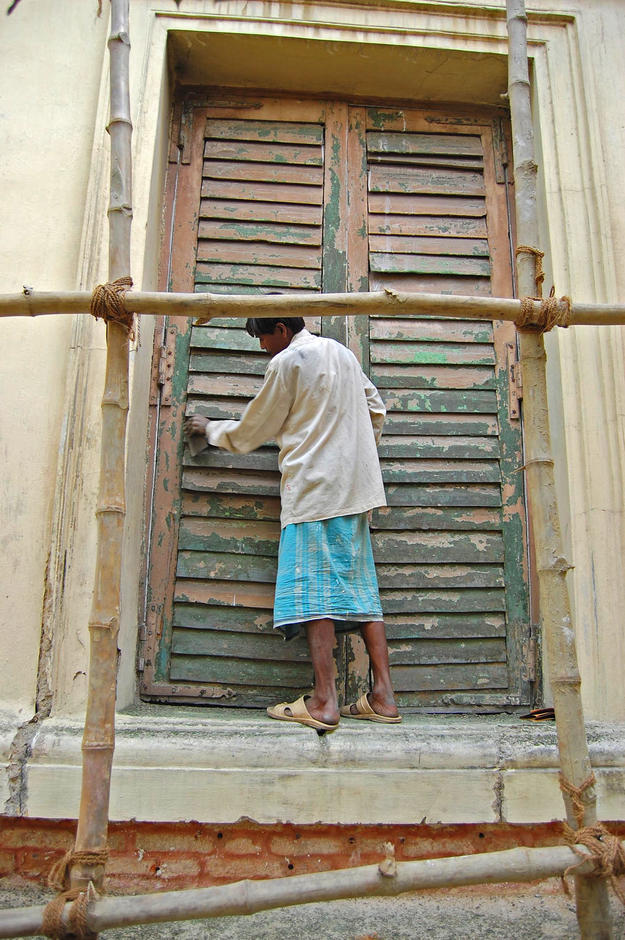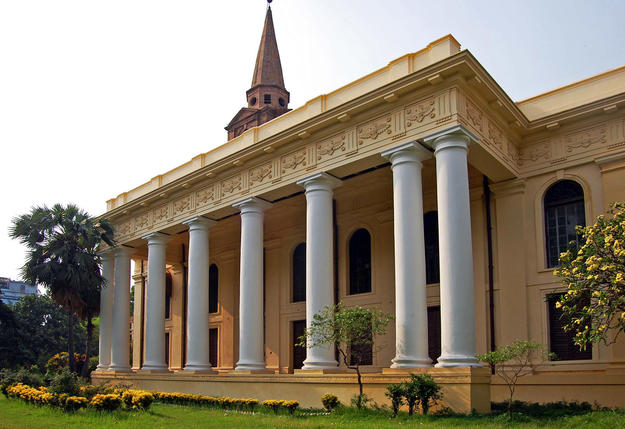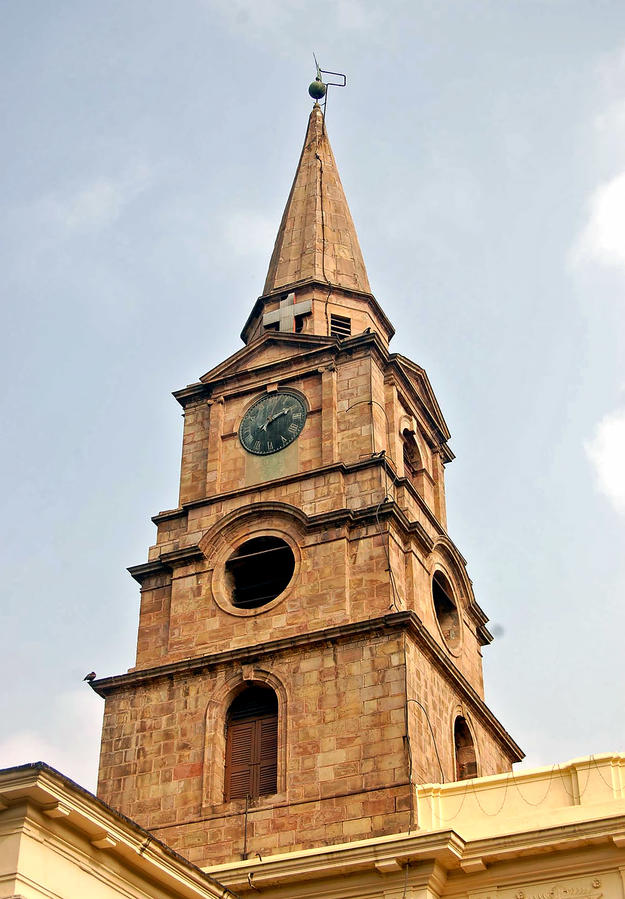The former Dalhousie Square, now known as Benoy-Badal-Dinesh Bagh, is an oasis at the heart of modern Kolkata, formerly Calcutta, in eastern India. Occupying an area of over two square kilometers, the plaza is ringed by historic architecture and contains the Lal Dighi, or “Red Tank,” a body of water that reflects the buildings above. The space was originally named for James, Marquess of Dalhousie, who served as the Governor-General of India from 1847 to 1856. In the eighteenth and nineteenth centuries, Calcutta was the capital of British India and Dalhousie Square was the city’s financial, social, and political nucleus. Calcutta’s first parish church, St. John’s, faces the square with its classical exterior and its early nineteenth-century steeple, modeled after Gibbs’s St. Martin’s-in-the-Fields in London’s Trafalgar Square. After the capital was moved to New Delhi in 1911, the buildings surrounding Dalhousie Square were neglected over time and occasionally demolished. In more recent years, local preservation groups have begun to advocate for the restoration and revitalization of the area.
2004 and 2006 World Monuments Watch
In the early 2000s, architects and students from the nearby Jadavpur University completed a survey of fifty historic buildings on and around Dalhousie Square. Several of these 200-year-old structures had been slated for demolition, and the identity of the entire plaza was being threatened by poor development schemes and explosive population growth. Dalhousie Square was included on the World Monuments Watch in 2004 and 2006 in order to raise support and funding for the local conservationists. Following Watch-listing, the government of West Bengal pledged to preserve the site; the municipality created its own list of landmarks, 55 of which were located in the Dalhousie Square Heritage Zone. In 2005, WMF arranged a strategy-planning workshop for stake holders and also contributed funding for a pilot project: the restoration of St. John’s Church. WMF coordinated and financed the first phase of work in 2007, which required stabilizing the church’s foundations and repairing the drainage system.
Dalhousie Square is one of south Asia’s few surviving colonial centers, and it is unique in India because much of its peripheral environment remains intact. The classical-style St. John’s Church is just one of 55 municipal landmarks in the vicinity of the plaza, which has been dubbed the “Dalhousie Square Heritage Zone” by city officials. The buildings that line the square range in date from 1695 and 1947, the latter year being the date of India’s independence from the United Kingdom. In the aftermath of that momentous event, Dalhousie Square was renamed Benoy-Badal-Dinesh Bagh (B.B.D. Bagh) after three Indian nationalists who were killed leading the rebellion. Whatever its name, the square and its surrounding architecture remain a beautiful feature of Kolkata due to a combination of local advocacy and international support.




